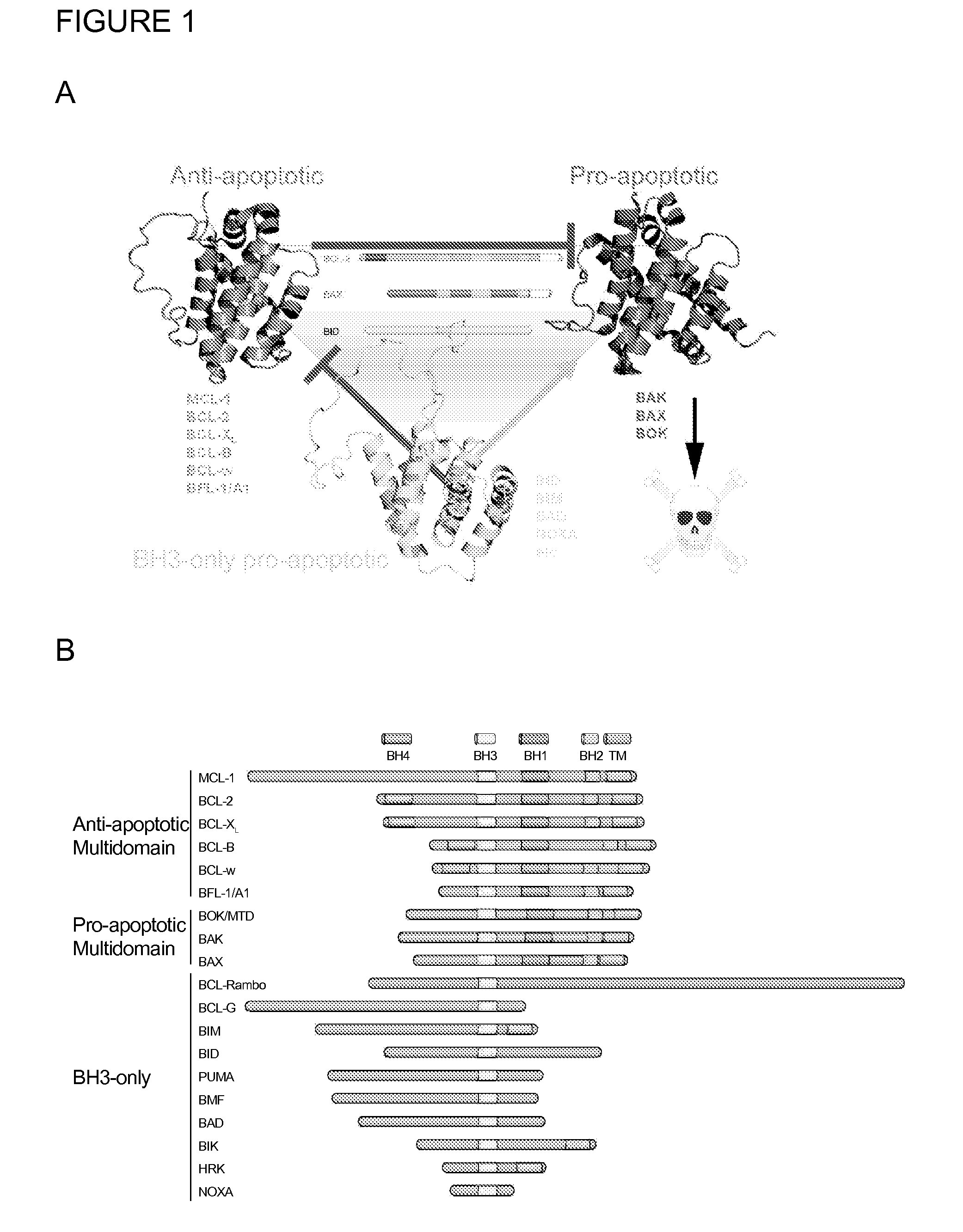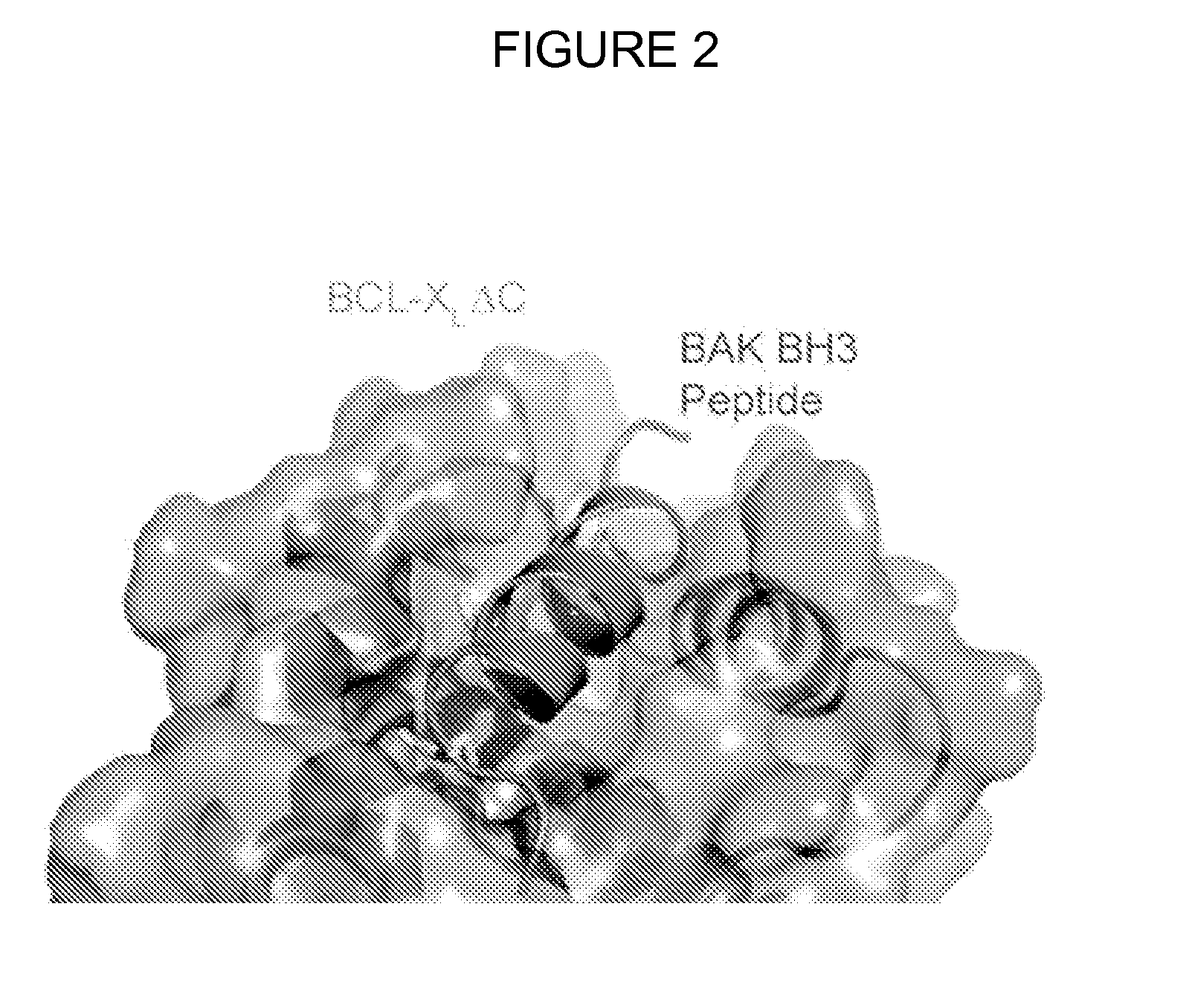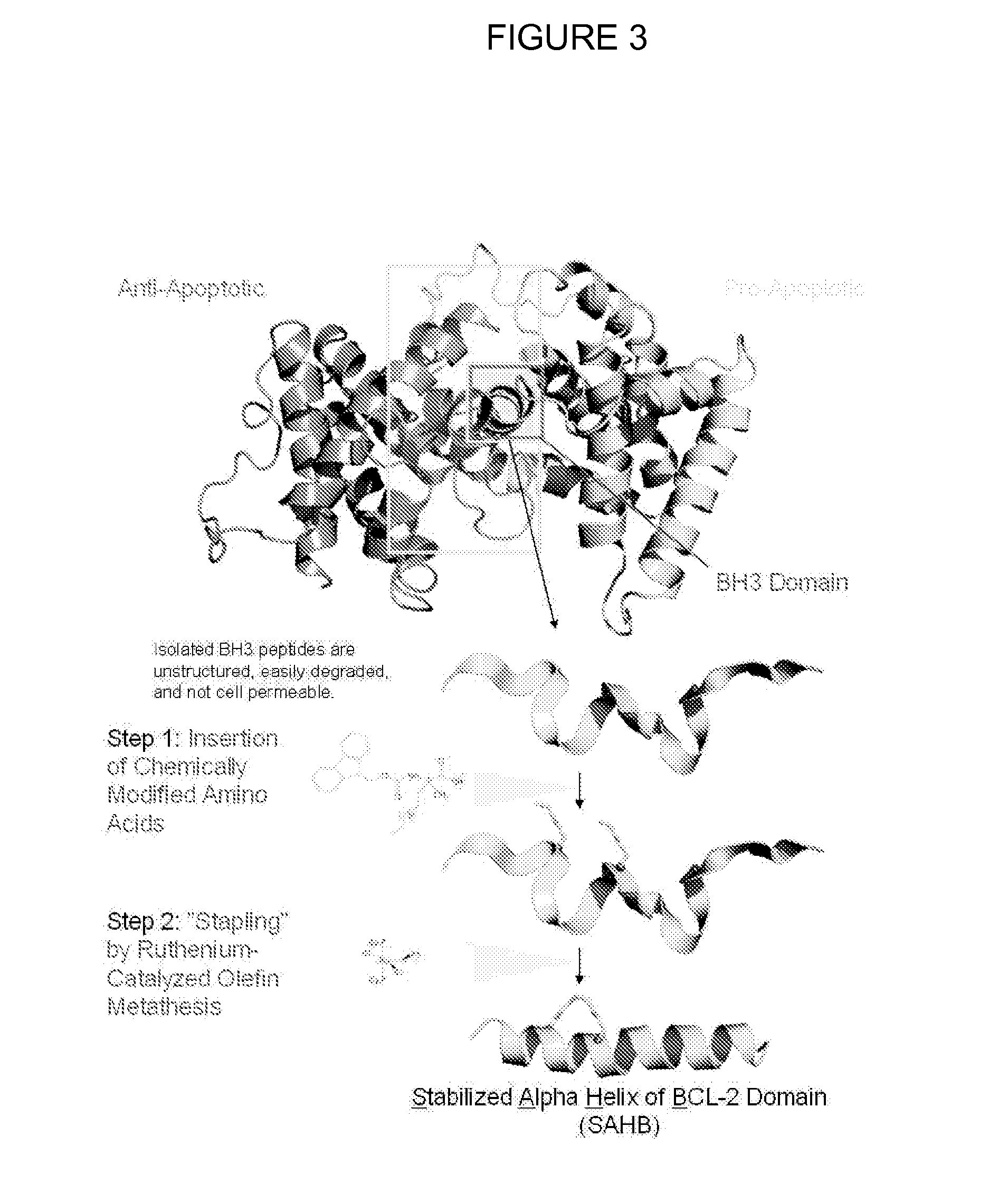Methods and compositions for specific modulation of mcl-1
a specific modulation and composition technology, applied in the field of methods and compositions for specific modulation of mcl1, can solve the problems of inability to develop specific inhibitors for the diversity of anti-apoptotic proteins, and the selective small molecule mcl-1 inhibitor remains out of reach, so as to improve apoptosis and regulate mcl-1 activity.
- Summary
- Abstract
- Description
- Claims
- Application Information
AI Technical Summary
Benefits of technology
Problems solved by technology
Method used
Image
Examples
example 1
Materials and Methods
Peptide Synthesis
[0334]Hydrocarbon-stapled peptides corresponding to the BH3 domains of BCL-2 family proteins and their FITC-derivatives were synthesized, purified, and characterized by circular dichroism as previously described (see, e.g., Bird et al., Methods Enzymol 446, 369 (2008) and WO 2009 / 108261, incorporated herein by reference). All peptides were purified by liquid chromatography-mass spectroscopy to >95% purity and quantitated by amino acid analysis.
Anti-Apoptotic Protein Production
[0335]Recombinant and tagless MCL-1ΔNΔC, BCL-2ΔC, BCL-XLΔC, BCL-wΔC, and BFL1 / A1ΔC were expressed and purified as previously described (Pitter et al., Methods Enzymol 446, 387 (2008), incorporated by reference). Briefly, transformed Escherichia coli BL21 (DE3) were cultured in ampicillin-containing Luria Broth and protein expression was induced with 0.5 mM isopropyl β-D-1-thiogalactopyranoside (IPTG). The bacterial pellet was resuspended in buffer (250 mM NaCl, 20 mM Tris, ...
example 2
MCL-1-Targeting SAHBs Exhibited Enhanced Alpha-Helicity, Protease Resistance, and Cellular Penetrance
Alpha-helicity
[0344]To evaluate secondary structure improvements of hydrocarbon-stapled peptides, circular dichroism (CD) spectra were recorded and analyzed on an Aviv Biomedical spectrometer (model 410), as has been previously reported (Walensky et al Science, 2004; Bird et al. Methods in Enzymology, 2008). Generally, short peptides do not exhibit significant α-helical structure in solution because the entropic cost of maintaining a conformationally restricted structure is not overcome by the enthalpic gain from hydrogen bonding of the peptide backbone. Indeed, unmodified BH3 peptides were found to display α-helical propensities of less than 20% (18% for MCL-1 BH3, FIG. 12), whereas installation of a chemical staple typically enhanced α-helicity of MCL-1 targeting SAHBs by at least 3-5 fold, with MCL-1 SAHBs displaying percent helical content that ranged from 55-100% (FIG. 12). The ...
example 3
X-Ray Crystallographic Analysis of an MCL-1 SAHB / MCL-1ΔNΔC Complex Detailed the Molecular Interactions of the MCL-1 Binding Interface
[0348]To determine the structure of the MCL-1 SAHB / MCL-1 binding interface, MCL-1ΔNΔC (6.3 mg / mL) was incubated with MCL-1 SAHB at a 1:1 ratio, and crystallization conditions were screened using 96-well sitting drop plates (Crystal Quick, Hampton Research) set up using the Screenmaker by Innovadyne Technologies. Initial screening conditions employed HT Index Screen (Hampton Research), JSCG+ Suite (Qiagen) and Pro-Complex Suite (Qiagen). Screening around the best hit was performed to identify the optimal condition for crystal growth. Formed crystals were removed, washed in the crystallization buffer and analyzed by SDS / PAGE and mass spectroscopy to verify the presence of the protein and peptide within the crystal. Co-complex crystals were soaked in cyroprotectant, flash frozen, and stored in liquid nitrogen. Initial diffraction patterns were measured at...
PUM
| Property | Measurement | Unit |
|---|---|---|
| Fraction | aaaaa | aaaaa |
| Fraction | aaaaa | aaaaa |
| Fraction | aaaaa | aaaaa |
Abstract
Description
Claims
Application Information
 Login to View More
Login to View More - R&D
- Intellectual Property
- Life Sciences
- Materials
- Tech Scout
- Unparalleled Data Quality
- Higher Quality Content
- 60% Fewer Hallucinations
Browse by: Latest US Patents, China's latest patents, Technical Efficacy Thesaurus, Application Domain, Technology Topic, Popular Technical Reports.
© 2025 PatSnap. All rights reserved.Legal|Privacy policy|Modern Slavery Act Transparency Statement|Sitemap|About US| Contact US: help@patsnap.com



